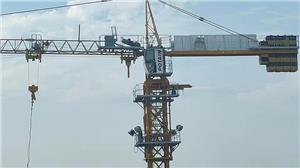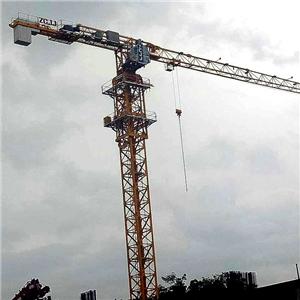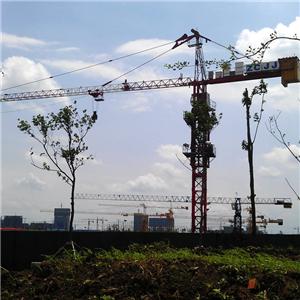the basic parameters of a tower crane The basic parameter is the standard to characterize the characteristics of the tower crane
What are the basic parameters of a tower crane? The basic parameters of the tower crane are the standards for the characteristics of the tower crane.
It includes lifting weight, lifting moment, lifting height, working speed, amplitude, lifting arm inclination, total weight of the tower crane, and wheel pressure. Each parameter is summarized below.
1. Weight G
The maximum component of the tower lifting material allowed to rise is called tilting weight G.
For tower hoists with variable amplitude, the rated weight of Tower hoists is determined according to the amplitude.
The weight(other than the hook set) of the crane is installed on the mount and shall be included in the rated starting weight. Such as grab, lifting electromagnet, hanging beam and various help lifting weight.
2. Lift torque
The product of lifting G and amplitude L is called lifting torque(load torque).
Rated lifting moment: product of rated starting weight G and amplitude L.
3. Elevation
The vertical distance between the highest and lowest working spaces of the tower crane is called the ascending category D of the tower crane.
The vertical interval between the highest working position of the tower crane and the horizontal plane of the tower crane is called the lifting height H of the tower crane, and the vertical distance between the lowest working position of the tower crane and the level of the tower crane is called the landing depth of the tower crane. H.
D = H + H, when there is no falling depth of the application site, the ascending scale D is the ascending height H. For measuring lifting height and reducing depth, the center of hook cavity is used as the reference point of side basin.
For the rest of the hanging gear(such as grabbing, etc.), the level low of the closed state is used as the benchmark.
4. Work Speed
1 Rated lifting speed v. Refers to the recovery speed(m/min) of the fetch device at the rated speed of the lifting mechanism motor.
2 Tower crane(big car) operation speed VK. Refers to the running speed(m/min) of the tower crane at the rated speed of the large car running mechanism motor.
3 The speed of the car is VT. Refers to the speed(m/min) of the car running mechanism motor at the rated speed.
4 Variation speed VR. The uniform velocity of horizontal displacement of the rated load in a variable amplitude plane in a stable state.
It is stipulated that at a height of 10m from the ground plane, when the wind speed is less than 3m/s, the tower is suspended on the horizontal river surface with an average speed(m/min) from the maximum, value to the minimum value.
5 lifting and stretching speed. When the lifting arm extends(or retracts), the speed at which its tip moves along the longitudinal core line of the arm frame(a/min).
Speed v.
In the entry road driving condition, the tower is driven by its own energy at a maximum operating speed(km/h).
7 turning speed N. In the case where the rotating folding electric idea is rated speed, the local return angle speed(maximum amplitude, with additional load) of the tower crane is(r/min).
5. Range L.
The horizontal distance between the vertical center line and the rotary center line when the tower is suspended in a horizontal field.
6. Heavy arm inclination.
In the lifting plane, the angle between the longitudinal central line and the degree line of the lifting arm is called the angle of the lifting arm, which is generally changed between 25 ° and 75 °.




